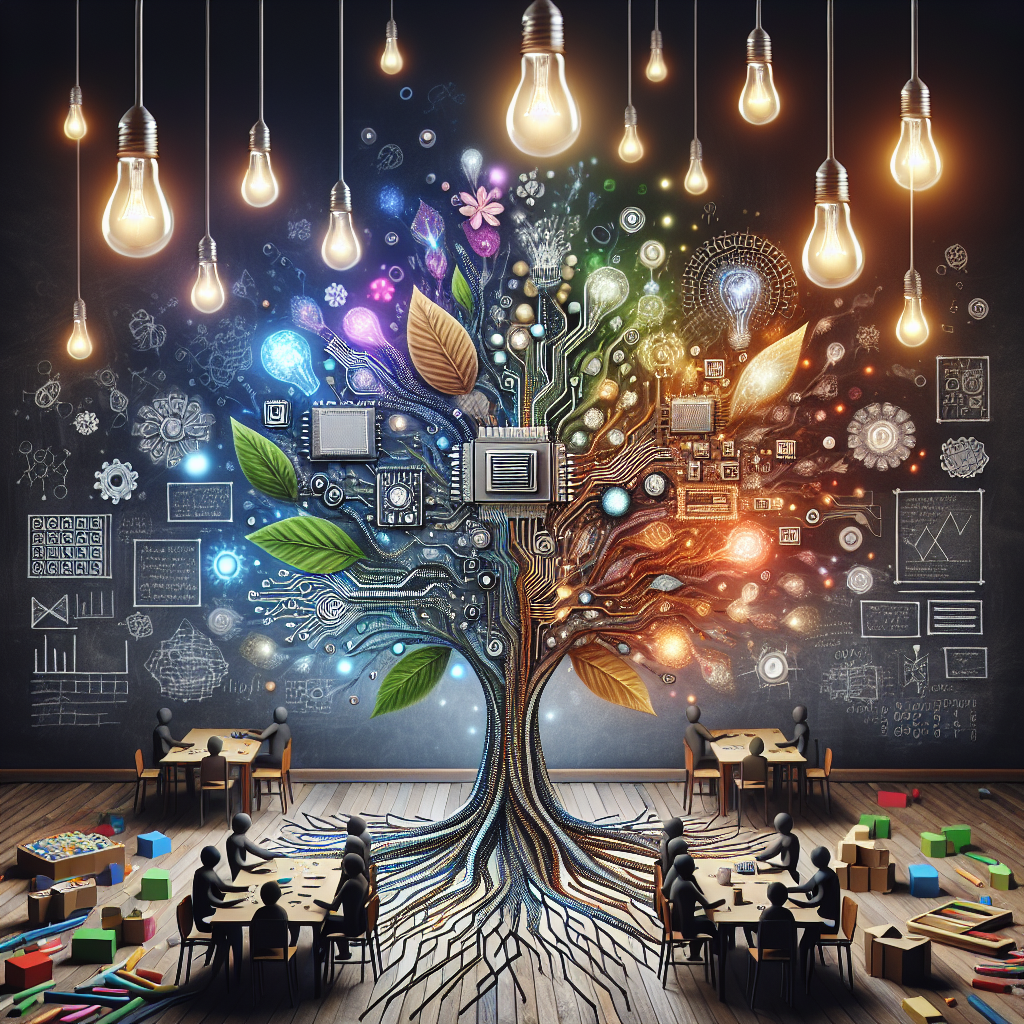Artificial Intelligence (AI) has become one of the most transformative technologies of our time, revolutionizing industries and changing the way we work and live. While AI is often associated with tasks like data analysis, automation, and predictive modeling, its potential for fostering creativity and innovation is also being increasingly recognized.
AI and Creativity: A New Frontier
Traditionally, creativity has been seen as a uniquely human trait, one that involves the ability to generate original ideas, make connections between seemingly unrelated concepts, and produce novel solutions to complex problems. However, with the advancements in AI technology, machines are now able to perform tasks that were once thought to be exclusive to human creativity.
One of the key ways in which AI is fostering creativity is through its ability to analyze vast amounts of data and identify patterns and trends that humans may not be able to perceive. By processing large datasets, AI algorithms can generate insights and recommendations that can inspire new ideas and drive innovation. For example, AI-powered tools like IBM Watson have been used to create original recipes, music compositions, and even pieces of art.
In addition to data analysis, AI is also being used to enhance human creativity by providing tools and platforms that facilitate collaboration and ideation. For instance, platforms like Google’s DeepDream and Adobe Sensei allow artists and designers to experiment with new techniques and styles, pushing the boundaries of traditional art forms. AI can also assist in the creative process by generating design suggestions, offering feedback on drafts, and automating repetitive tasks, allowing creators to focus on more high-level aspects of their work.
Furthermore, AI is enabling new forms of creativity by combining different disciplines and approaches in innovative ways. For example, AI-powered systems can analyze text and visual data simultaneously to create multimedia content, such as interactive stories or immersive experiences. By breaking down the silos between different creative fields, AI is fostering cross-pollination of ideas and driving interdisciplinary collaborations that can lead to groundbreaking innovations.
Collaboration and Innovation: The Power of AI
AI is not only transforming individual creative processes but also reshaping the way teams collaborate and innovate. By leveraging AI technology, organizations can bring together diverse perspectives, skills, and expertise to solve complex problems and drive meaningful change.
One of the key benefits of using AI for collaboration is its ability to enhance communication and decision-making within teams. AI-powered tools like chatbots and virtual assistants can facilitate real-time interactions, streamline workflows, and provide personalized recommendations, making it easier for team members to share ideas, provide feedback, and make informed decisions. By automating routine tasks and freeing up time for more strategic activities, AI can also boost productivity and creativity within teams.
Moreover, AI can help teams overcome cognitive biases and groupthink by offering objective insights and alternative perspectives. By analyzing data and generating evidence-based recommendations, AI can challenge assumptions, spark debates, and foster a culture of innovation within organizations. This can lead to the generation of more diverse and disruptive ideas, driving breakthrough innovations that have the potential to transform industries and markets.
Furthermore, AI can enable organizations to harness the collective intelligence of their teams by analyzing vast amounts of data and extracting valuable insights. By mining internal and external sources of information, AI can identify emerging trends, customer preferences, and market opportunities that can inform strategic decisions and drive innovation. By empowering teams with actionable intelligence, AI can help organizations stay ahead of the competition and capitalize on new opportunities in the rapidly changing business landscape.
FAQs
Q: Can AI truly be creative?
A: While AI may not possess consciousness or emotions like humans, it can exhibit creativity in the sense of generating novel ideas, making connections between disparate concepts, and producing original solutions to problems. By leveraging algorithms and data, AI systems can simulate human-like creative processes and generate innovative outputs across various domains, such as art, music, and design.
Q: How can AI enhance human creativity?
A: AI can enhance human creativity by providing tools and platforms that facilitate collaboration, experimentation, and ideation. By automating routine tasks, offering design suggestions, and analyzing data, AI can free up time for creators to focus on more high-level aspects of their work and explore new creative possibilities. Furthermore, AI can inspire new ideas, drive innovation, and push the boundaries of traditional art forms by combining different disciplines and approaches in innovative ways.
Q: How can AI foster collaboration and innovation within teams?
A: AI can foster collaboration and innovation within teams by enhancing communication, decision-making, and productivity. By providing tools for real-time interactions, personalized recommendations, and data-driven insights, AI can facilitate knowledge sharing, idea generation, and strategic decision-making within organizations. Moreover, AI can challenge cognitive biases, spark debates, and drive breakthrough innovations by offering objective perspectives and alternative viewpoints that can inspire new ideas and drive meaningful change.
In conclusion, AI is not only transforming individual creative processes but also reshaping the way teams collaborate and innovate. By leveraging AI technology, organizations can bring together diverse perspectives, skills, and expertise to solve complex problems, drive breakthrough innovations, and stay ahead of the competition in the rapidly changing business landscape. By embracing AI as a partner in creativity, organizations can unlock new opportunities, drive meaningful change, and shape the future of work and innovation.

